|
|
Welcome to the Spring issue of the LIFE Dee River newsletter
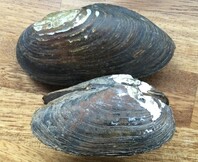
An exciting discovery was made during survey work on the lower Dee recently, when we found a mussel shell on the riverbank but were unsure of the species. There are a number of different mussel species known to exist within the Dee catchment; swan mussel (Anodonta cygnea), duck mussel (Anodonta anatine) and freshwater pearl mussel (Margaritifera margaritifera). However, the mussel we found didn’t appear to be any of these species. Further investigation and identification by experts revealed this to be a Swollen River Mussel (Unio tumidus). Although not threatened across its range, this is the first confirmed record on the Dee (and only the tenth time that this animal has been recorded in Wales), adding to the ecological map of our river. Host animals for this mussel are perch, roach and rudd.
The Freshwater Pearl Mussel is critically endangered in Europe and saving the Dee population from extinction is one of the key objectives of LIFE Dee River, and we are making good progress in this respect. Fifty adult mussels were recovered and relocated to the Clywedog hatchery, and we are delighted to say that in the last twelve months these have successfully reproduced (spatting) to develop as larvae (known as glochidia). These are tiny mussels released into the water column that attached to the gills of host fish. The hosts of pearl mussel larvae are juvenile salmonids (salmon, sea trout and brown trout). In the wild, the chances of larva encountering a suitable fish is very low, and nearly all are swept away and die, only a few lucky ones are inhaled where they snap shut on to the fish's gills. Glochidia live and grow in an oxygen-rich environment until the following May or June, when they drop off their host. The juvenile mussels must land on clean gravelly or sandy substrates if they are to successfully grow into adults, which can live for over 100 years!
Image: Freshwater Pearl Mussel (top), and Swollen River Mussel (below).
|
|
|
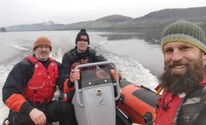
On a fresh wintery morning in March, the team headed out with Wardens from Eryri National Park to place acoustic receivers in Llyn Tegid as part of our fish tracking work. The acoustic tracking equipment helps us to monitor downstream migration of salmon smolts, and will also pick up any adult salmon that have been tagged in Chester and migrate all the way up through Llyn Tegid to spawn in the upper tributaries.
The Vemco VR2W 180kHz acoustic receivers are secured underwater and use sound waves to detect fish that have been tagged with miniature coded transmitters. The tags relay unique fish ID information over a high frequency band, which is then logged in the receiver providing a record of each visit to that area by a tagged fish. As part of our monitoring programme, we have deployed around 45 acoustic receivers throughout the Dee catchment which will help us better understand key behaviours of salmon and lamprey, assess delays and identify any potential barriers to migration.
With thanks to our project partners, Eryri National Park, for all their help on the lake (and for the warming brew afterwards!). View more photos.
|
|
|
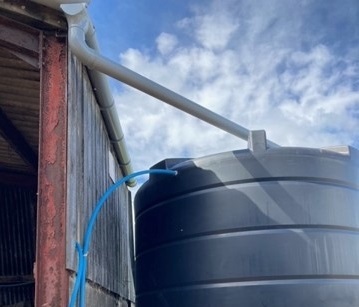
As an added benefit of the LIFE Dee River programme, we have obtained additional funding from Welsh Government under the Water Quality funding stream. In 2022/23 we received £100,000 to carry out work on farms within the Dee catchment to improve the water quality in local rivers.
As part of this work, we have installed a total of 580 meters of new guttering on farm buildings, and new downpipes have also been installed and sealed to ensure that no dirty water or nutrients from the yard accidentally find their way into nearby watercourses. This will bring benefits to the local watercourses through better separation of clean (rainwater) and dirty water (yard wash off), which will reduce the amount of slurry being produced by stopping unnecessary rainfall entering the slurry store, also resulting in less spreading on nearby land being carried out.
On some of the sites where we have carried out guttering work, we have also installed rainwater harvesting tanks that contain and keep the rainfall clean while also offering the potential for the water to be used in a more sustainable way, such as reusing the water for other purposes around the farm.
The work has been carried out on several different farms varying in size and type of farming, from beef production in the upper catchment to more intensive dairy farms in the lower catchment.
|
|
|
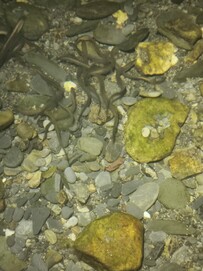
Lamprey are one of the key species the project is targeting through various interventions, with the main focus on river and sea lamprey. However, there is a third species found in the Dee, that is also one of the features of the Special Area of Conservation (SAC), which are brook lamprey. A couple of weeks ago, whilst carrying out smolt trapping work at night in the upper part of the catchment, we were lucky enough to witness brook lamprey spawning. Watch the video here.
Brook lamprey remain in freshwater for their entire lives, living for 3-7 years in silty/sandy areas of the river, before metamorphosing into adults the autumn prior to spawning. Once in their adult form, they stop feeding entirely, and die shortly after spawning. The eggs (visible as tiny white dots in the photo) hatch after a few days, before the larvae bury into silty areas to start the lifecycle again.
We have also been working with members of the public and other organisations to carry out lamprey surveys for river lamprey, which spawn in mid-late April. We have a team of spotters who report any river lamprey spawning to us so we can map their distribution. The same work will be done in June when the sea lamprey are spawning within the Dee.
Acoustic tagging work has also been carried out on river lamprey, allowing us to understand their current range within the river. Rich Cove, our Senior Monitoring Officer, has tagged 25 river lamprey over the last few months, and we will be gathering the data from a network of around 45 receivers deployed in the river to look at their movements. We will also be tagging sea lamprey as they now start to enter the river over the coming weeks.
If anyone spends time by the river and would like to be part of our citizen science group to report any sightings, please get in touch with Joel (joel.rees-jones@cyfoethnaturiolcymru.gov.uk).
|
|
|
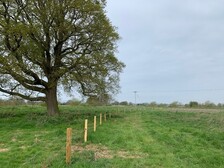
One of the largest fencing schemes we’ve carried out within the catchment is a project near Shocklach, Cheshire. In April, our contractors fenced a continuous 4.5 kilometres stretch of the river Dee to create a riverside corridor. The ‘corridor’ is a buffer strip of land along the riverbank which we fenced off to prevent livestock from poaching the banks, as well as encouraging riverside ecosystems to flourish. In this scheme, the average width of the riverside corridor was around 25 metres, while some sections of the fence line were over 75 metres from the riverside which will provide an excellent opportunity for nature to thrive in this area.
Last year, we planted 4,000 trees at the site including a wide variety of species such as common alder, willow, oaks, beech, hazel, rowan, scots pine, field maple, holly, black poplar, aspen hornbeam, sweet chestnut, horse chestnut, whitebeam, and spindle berry. The fencing scheme will ensure that livestock are restricted from accessing the watercourse, reducing the amount of sediment and organic matter reaching the Dee. The planted trees will help stabilise the banks and create habitat and shade along the riverbank as well as in the river itself. Together, the fencing and tree planting provide multiple benefits for both the local environment as well as the farming practices on the site.
|
|
|
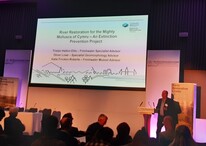
Two of our project staff attended the 24th Annual River Restoration Conference in Birmingham on the 19th - 20th April. The conference focus was to combine the views of the river restoration community (400 participants) to propose an action strategy for achieving river restoration ambitions in the UK. It was a fascinating two days, with presentations and discussions on a wide range of project activities and methodologies - from urban river restoration to working with rural farmers, from reconnecting floodplains to involving citizen scientists in monitoring. Links to watch the presentations here.
LIFE Dee River project activities, as part of wider NRW efforts to conserve the critically endangered freshwater pearl mussel, was represented in a presentation “River restoration for the mighty molluscs of Cymru – an extinction prevention project”. A second presentation, on our work to improve Erbistock weir for fish passage, was given by the consultant firm AECOM. It described the modelling work that was undertaken to assess likely change in river sediment and the river bank profile, following the planned partial removal of the weir. Both presentations generated much interest from the audience, as indicated by follow-up questions.
Given the multiple challenges facing UK rivers and biodiversity, it was encouraging to see so many excellent examples of projects making a difference. The action strategy as an outcome from the conference will help provide a guide to ensuring political, financial, and resourcing support for this crucial work.
|
|
|
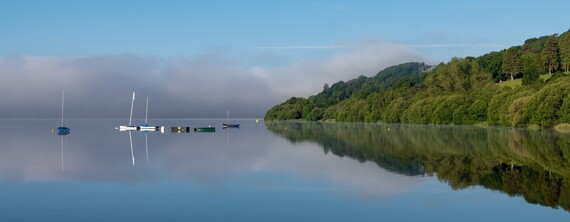
NEEMO visit in July
The LIFE Dee River programme is monitored by external monitors that report up to LIFE, ensuring the work we complete is compliant with funding and procurement laws, and that we fulfil the objectives outlined within the bid. As part of this work, we have regular meetings with our monitor, and also an annual ‘Mission Visit’. This year, our monitor will be accompanied by the Project Manager from the European Climate, Infrastructure and Environment Executive Agency (CINEA) who oversee all LIFE Nature and Biodiversity projects. This will be a two day trip in July around the catchment to show the monitors much of the work that we have completed so far. We look forward to hearing their feedback.
Chester Weir
Work has just started at Chester to improve downstream passage for juvenile salmon and trout at Chester weir. An existing gate is in place in the weir crest that has not functioned for over 20 years, by replacing this structure, it will allow NRW to ensure that smolts are not delayed on their downstream journey by the weir. We will keep you updated with our progress.
Dee Flows Day
LIFE Dee River officers will be on site at the first ‘Dee Flows’ community open day at Ty Mawr Country Park on Saturday 27th May, organised by the Welsh Dee Trust. It's a great opportunity to meet members of the team and find out more about all the work we've been doing to improve conditions in the Dee catchment, and our plans for the future. Make sure to save the date and pop down to say hello.
|
|
|
|
|